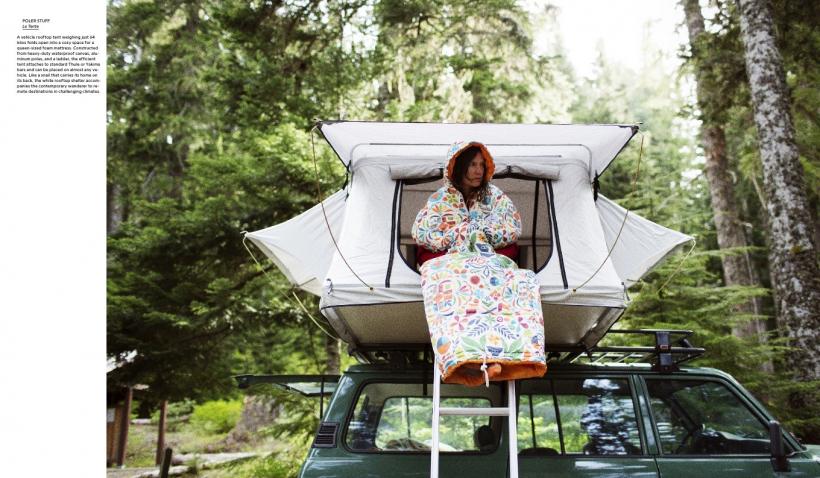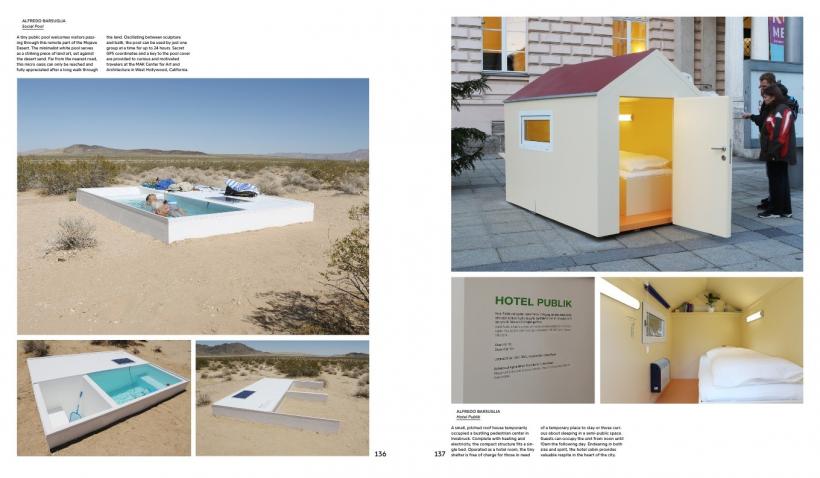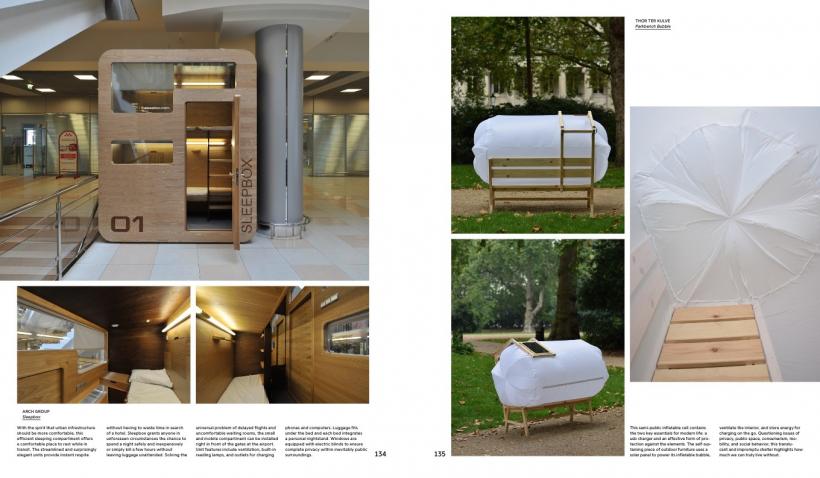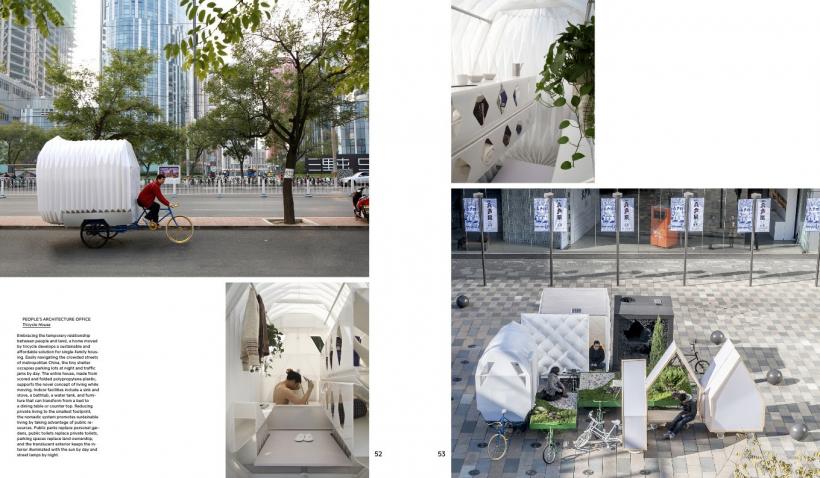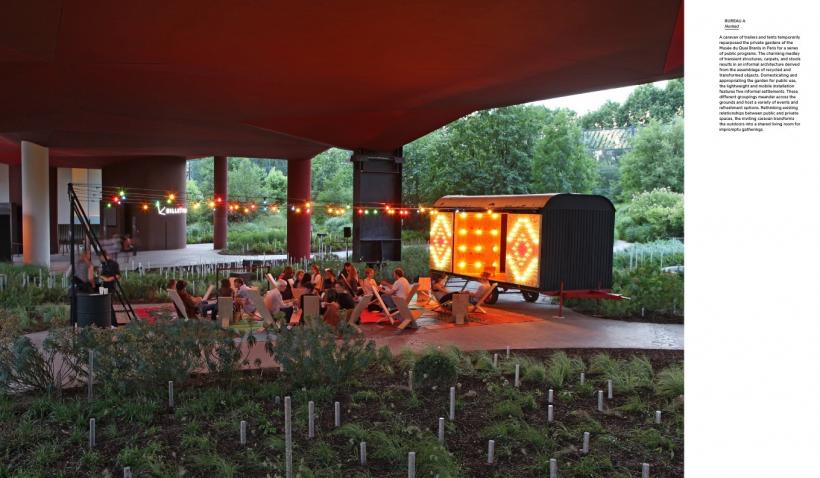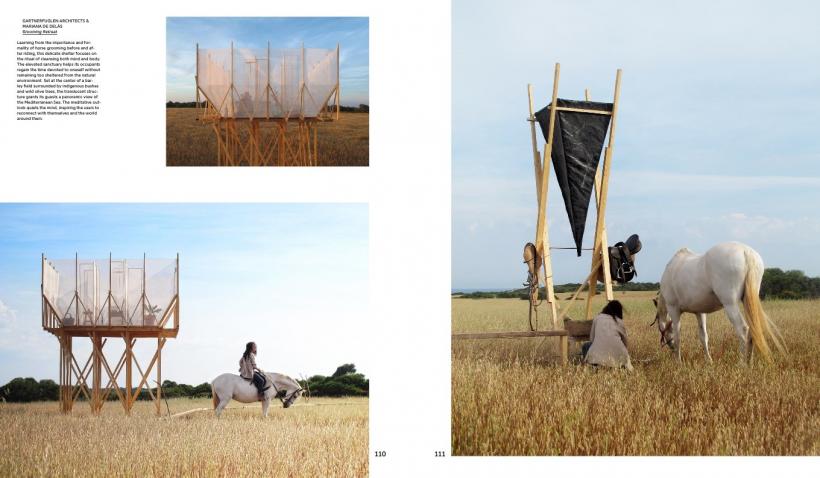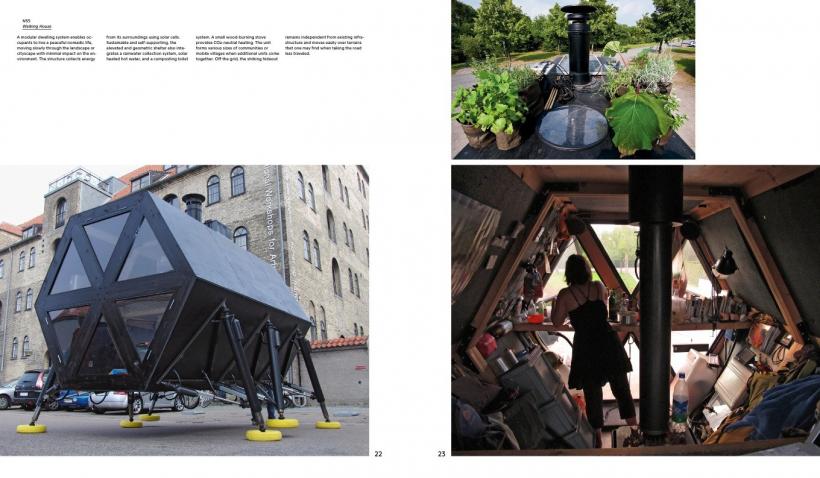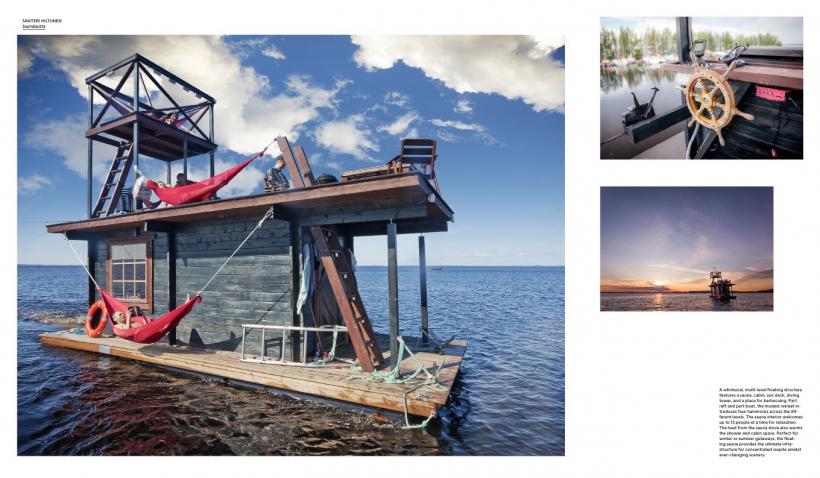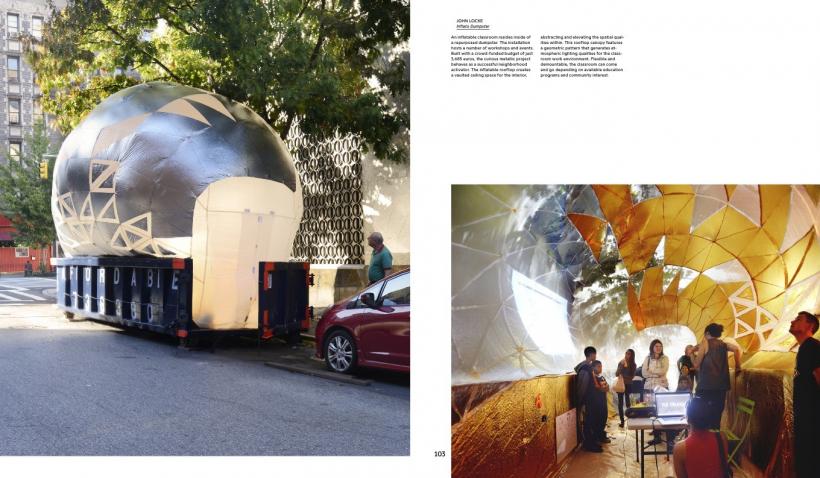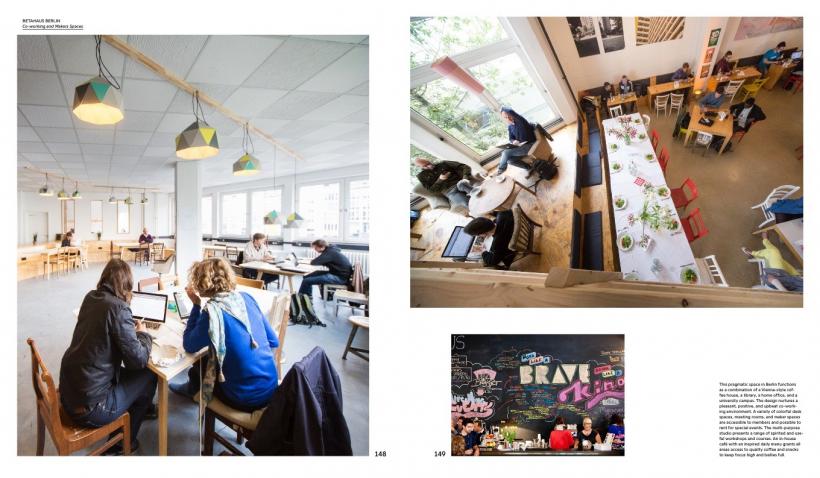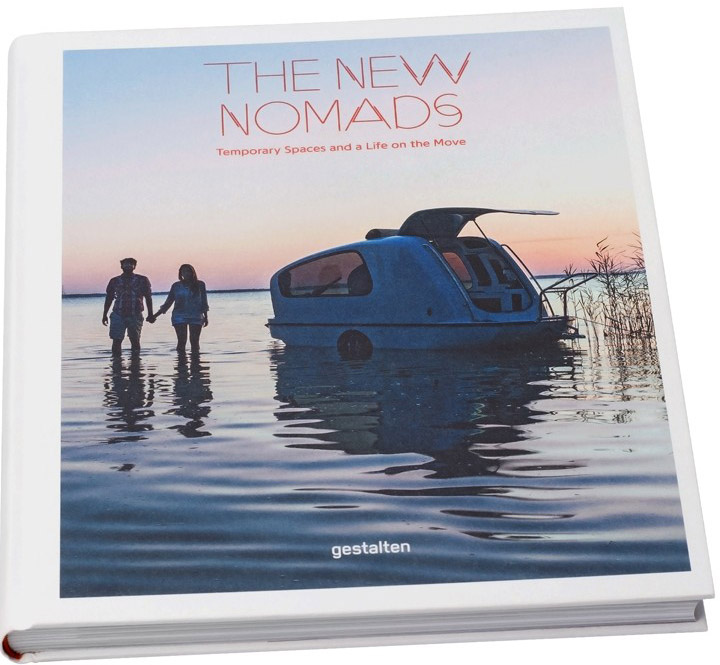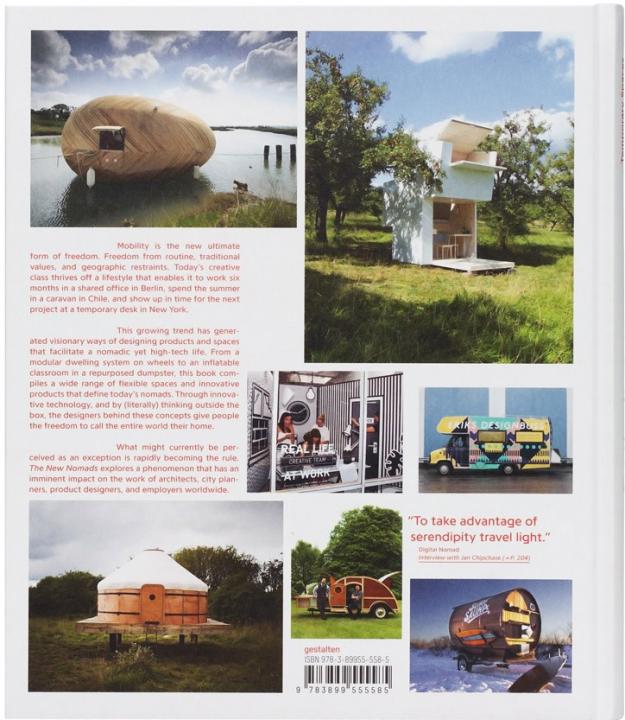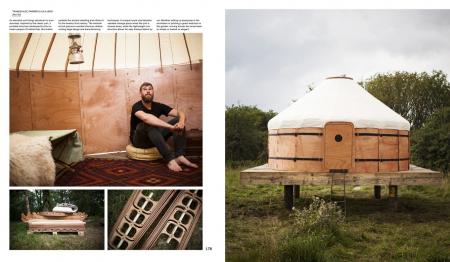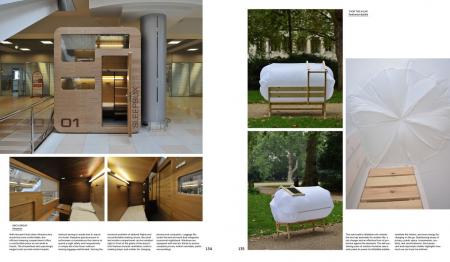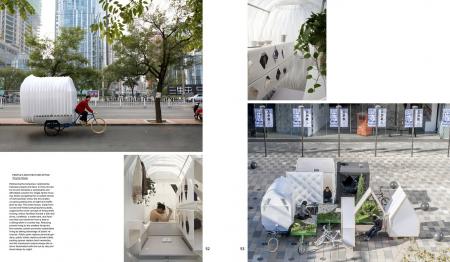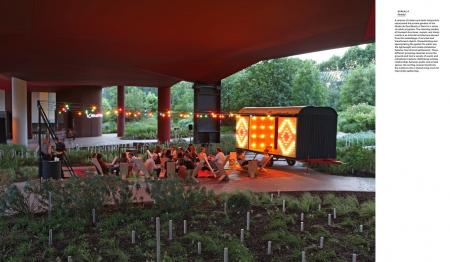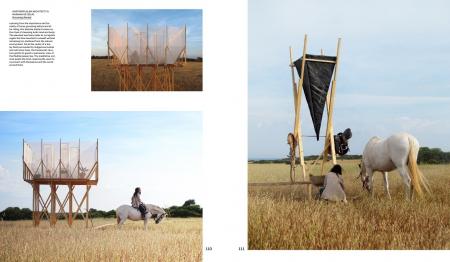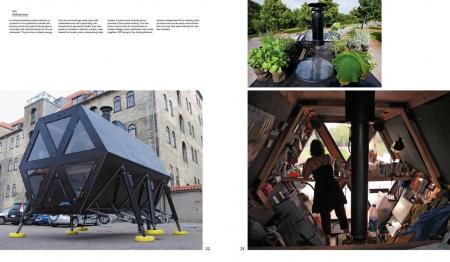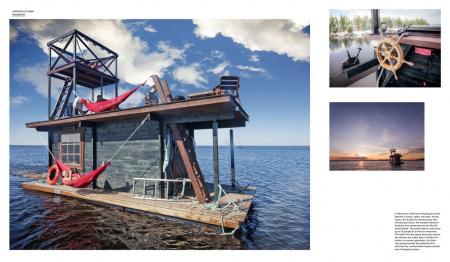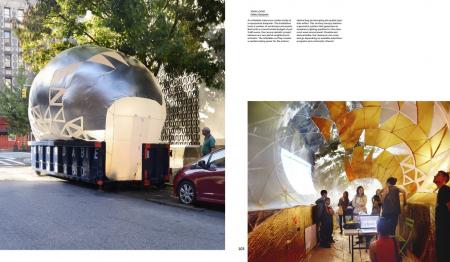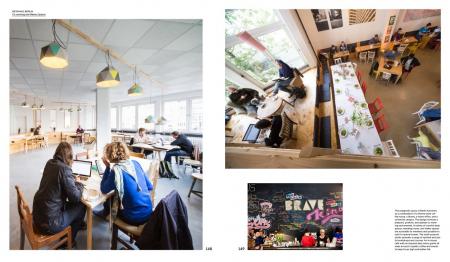Життя міських кочівників висуває нові вимоги до міст, місць проживання та робочих місць. Ця книга представляє тимчасову архітектуру, гнучкі концепції приміщень і меблів, а також інструменти для покоління, яке почувається як вдома в будь-якому куточку земної кулі.
Мобільність — це абсолютно нова форма свободи: свобода від рутини, традиційних цінностей і географічних обмежень. Сучасні творчі люди процвітають завдяки способу життя, який дозволяє їм працювати шість місяців у спільному офісі в Берліні, проводити літо в каравані в Чилі та вчасно з’являтися для свого наступного проекту за тимчасовим робочим столом у Нью-Йорку.
Ця зростаюча тенденція породила далекоглядні способи проектування продуктів і просторів, які полегшують кочове, але високотехнологічне життя. Від модульної житлової системи на колесах до надувної класної кімнати в перепрофільованому смітнику, у цій книзі зібрано широкий спектр гнучких просторів та інноваційних продуктів, які визначають сучасних кочівників. Завдяки інноваційним технологіям і (буквально) нестандартному мисленню дизайнери, що стоять за цими концепціями, дають людям свободу називати весь світ своїм домом.
Сучасне покоління Інтернету більше не потребує дому. Він мобільний. Він працює шість місяців у спільному офісі в Берліні, проводить літо в каравані в Чилі та з’являється якраз вчасно для наступного проекту за тимчасовим столом для клієнта в Нью-Йорку. Зростати в Інтернеті та цифрових інструментах означає жити й працювати по-іншому. Крім працездатного бездротового зв’язку та доброї кави, веб-розробникам, дизайнерам, музикантам, журналістам та іншим творчим підприємцям потрібні насамперед натхнення, нові ідеї, контакти та міжнародний обмін. Таким чином вони подорожують з одного коворкінгу в інший, чергуючи країни та континенти, а також житло, друзів і культури.
The New Nomads документує цю тенденцію, зокрема показуючи архітектуру, дизайн інтер’єру, модульні меблі та багатофункціональні інструменти, які це кочове покоління розробило для власних потреб. Розділені офісні поверхи з гнучким використанням, тимчасові житлові та робочі приміщення, які пересуваються разом з кочівниками, багатофункціональні об’єкти, які одночасно є кріслом і місцем для зберігання, столом і ліжком або шафою та письмовим столом, усе це представлено в книзі. Необхідна інфраструктура не ховається, а стає відмінною рисою дизайну. Компактність і функціональність відповідають високим стандартам естетики, екологічності та матеріалу.
Представників цього кочового покоління можна зустріти по всьому світу. Вони залишають сліди, особливо у великих містах, а також у транспортних вузлах. Спальне місце в аеропорту заброньовано за короткий термін через скасовані стикувальні рейси. Столи, кімнати для переговорів, демонстраційні зали та кейтеринг доступні протягом кількох годин або днів за потреби. Експериментатори розробляють мобільні пристрої, які можна використовувати в поєднанні з існуючою інфраструктурою або окремо. Пустити коріння тепер означає придбати житло на вихідні, громадський сад або будинок на дереві.
Завдяки цим інноваційним типам концепцій приміщень і меблів багатофункціональний тимчасовий житловий простір стає кочовим домом. Те, що зараз може сприйматися як виняток, насправді швидко стає правилом. «Нові кочівники» досліджує явище, яке вже починає впливати на роботу архітекторів, містобудівників, дизайнерів продуктів і роботодавців у всьому світі.




